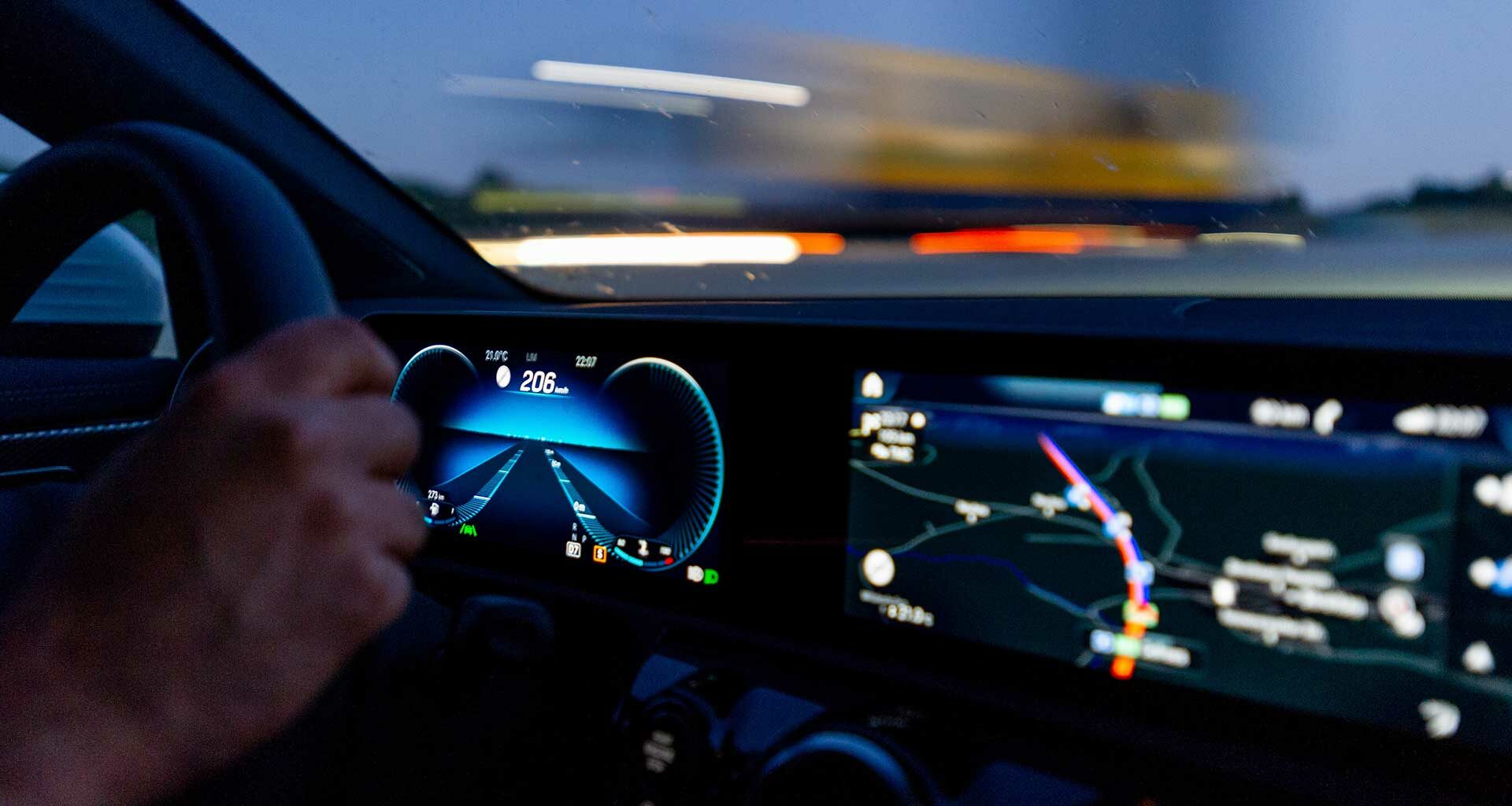“It’s complicated right now. Carmakers have invested in cutting-edge UI design without any boundaries or industry standards.”
Are you the kind of person that simply wants to get in your car and go? Do you also want your car to be one big mobile device with wheels—with playlist syncing, surround-sound audio, always-on connectivity, back-up cameras, steering wheel temperature controls, and hands-free texting capabilities? As technology continues to evolve, the car dashboard is also evolving and beginning to change the entire experience of driving.
by Lisa Powers, UX Director at Capgemini Americas
But accessing your playlist or receiving restaurant reservation alerts on your dashboard might end up being a distraction. Maybe some of us are wishing it was the good ole days of simple transportation. Let’s face it though, this is the new reality and there’s no going back. Customer experience is now at the heart of the automotive business as most people expect the same technology in their cars as they have throughout the rest of their lives.
Despite the advancements automakers are attempting to introduce in their next generation of vehicles, their digital dashboard implementations arguably lack sound UX strategies and design.
Despite the advancements automakers are attempting to introduce in their next generation of vehicles, their digital dashboard implementations arguably lack sound UX strategies and design. They must ask themselves, how does the user fit into the latest digital innovation and technology? We don’t know yet how everyone is adapting to all the digital changes in cars. Auto companies need to consider whether today’s car dashboards are helping customers or distracting them from a safe driving experience. If the driver’s eye is not on the road because an interface is not intuitive or too slow to respond, then not only could it lead to an unsatisfactory experience, but a potentially dangerous one.
Reconciling dashboard UI and UX
Today’s car manufacturers are now like big tech companies creating their own software, and they’re all competing to become the next best digital experience. Each automaker has a different user interface (UI) and user experience (UX) to their dashboards. In their haste to create the latest and greatest digital dashboards, automotive enterprises have invested in their UI design, typically utilizing an overwhelming amount and complexity of screens, buttons, and countless other bells and whistles that display an unfathomable amount of information.
One recent car model provides a touchpad positioned between the front seats, allowing the user to activate tasks that take place on a screen on the dashboard. The user needs to remember where to move their finger to navigate, preferably without looking down at the touchpad. And some automakers are exploring dashboards with different combinations of physical screens and heads-up displays. Car companies are even testing other surfaces for digital displays, and some even have dozens of screens.
If the car of the future is going to take advantage of the latest technologies, like augmented reality-enabled displays on windshields, then focusing on safety is key for the user.
Trying to figure out how to access this information on the dashboard is not an easy task. Most dashboard interfaces require multiple swipes and clicks to get what you want. Some dashboards are right out of a sci-fi flick and even offer 3D displays. And believe it or not, one innovative interface for a gauge cluster shows you mood changes as you select driving modes. If the car of the future is going to take advantage of the latest technologies, like augmented reality-enabled displays on windshields, then focusing on safety is key for the user.
But how do we know where user experience has been intelligently considered, since we know for sure that every user is different? Take for instance the issue of smart phone compatibility. We know that drivers all have different smart phones—likely from the two largest smart phone companies in the world. Some car manufactures are using a universal platform for one brand, while others are using a different platform that is compatible with the other brand. That means we have different interfaces and icons working side-by-side in some cases, lacking an overall coordinated look and feel and creating confusion for the user. Moving into the future, car manufacturers’ only touchpoints with users may be through the vehicle’s infotainment system. In this case, car manufacturers will want to integrate their own branding – seamlessly – without compromising the overall user experience.
That said, it’s complicated right now. Carmakers have invested in cutting-edge UI design without any boundaries or industry standards. The advances in technology in the automotive industry are extremely innovative and provide some exciting user interface designs – even exceptional designs – and an amazing user experience. But in the process, they have also introduced a whole new learning process for users as there are no established standards or universal patterns for doing specific tasks. In other words, the user has seemingly been neglected in recent years. Many auto enterprises have dedicated time and money to UI design in the hopes of winning the digital dashboard race, but they’ve left their users scrambling to keep up. Now, they must bridge the gap between UI and UX.
Rerouting UX design
How can we begin to solve the user’s experience of driving considering the complexity, levels of learning, and so much new technology? More user research and testing needs to happen – outside of the lab and on the road while driving. For instance, keeping the user’s thumbs on the steering wheel while interacting with various tasks so that the user doesn’t have to take their hands off the wheel is something worth exploring. Another approach is adding more voice controls and using hand movements to control various tasks while driving, this way the driver doesn’t have to look away from the road and could help to minimize the driver’s distraction. Inputs from basic data to augmented reality and biometrics, adding a more customized, personal experience beyond typical car personalization would give users the option to choose what suits them and in the end, puts the driver in control.
In addition to the dashboard interface experience, car manufacturers are also collecting and sharing different types of data about users’ identity and driving patterns. Manufacturers may share or sell data to a variety of entities, such as insurance companies, data brokers, or the government. From the user’s point of view, it would be good to know that this data is also being tested with consumers and used as research to support an improved dashboard and driving experience. It’s crucial for the emerging trends in dashboard design and future of software development to be user-centered so that the creation of exceptional products will meet the needs of users as well as demands of the market.
Ultimately, as users, we want safe and intuitive dashboard experiences that make information easy to access, and easy to learn. It’s the responsibility of user experience designers, developers, and car manufacturers to avoid getting caught up in the race to put every possible control on a dashboard design. The driving experience should aim to blend safety and information, entertainment, and a view of the world outside of the car, without a risk to the initial goal, which is driving. Car manufacturers need to have a solid understanding of who their customers are—let’s not forget the user.

Lisa Powers is a UX Director at Capgemini Americas with more than 20 years of professional experience in the digital interactive industry. Her expertise spans design, user experience, customer experience strategy and research across industries including automotive, finance, manufacturing, retail, non-profit and media.
Photo by Randy Tarampi on Unsplash













Lisa, tactile knobs and switches are keys to intuitive interface for cars – many car manufacturers have tossed everything into screen displays, where you can’t make any changes without taking your focus off of driving – and they have mainly done this for cost savings… You aren’t naming any names in this article, but GM stands out as a company that is making things harder with their platform, as a means of making more profit for themselves, at the detriment of there customers…